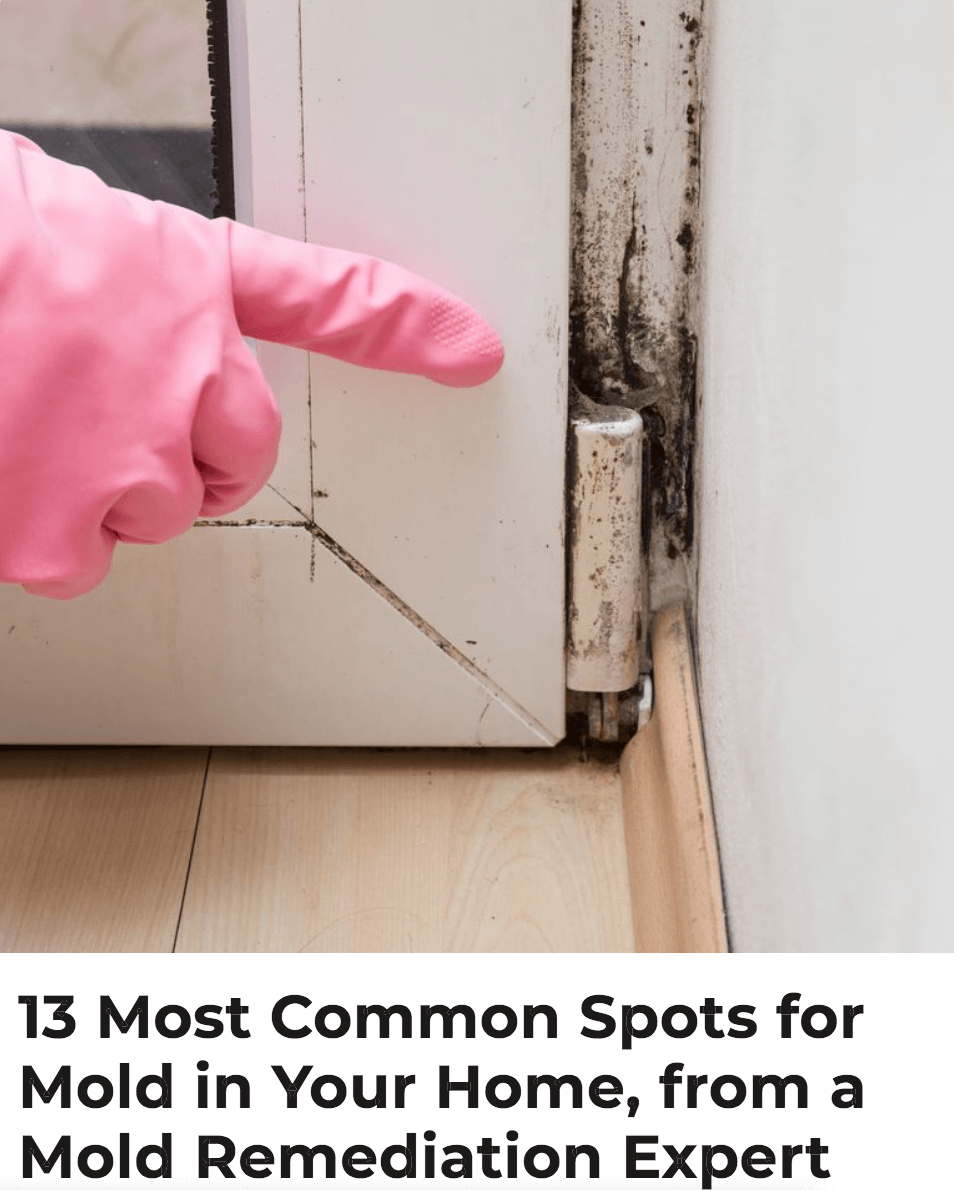No products in the cart.
13 Most Common Spots for Mold in Your Home
by Michael Rubino // October 6
by Michael Rubino // October 6
Michael Rubino was featured in an article at The Healthy to discuss hotspot locations for mold in the home and the health impact.
Aside from some cheesy exceptions, when you find food in your fridge sporting the tell-tale sign of mold—a green, white, or black fuzz—it should get an express ticket into the trash. At best, moldy food is a sign of spoilage, so it won’t taste great. But, it could also be dangerous to consume. “There are over 100,000 species of mold identified so far,” explains Michael Rubino, a mold remediator, air quality expert and the author of The Mold Medic: An Expert’s Guide to Mold Removal. While many of these species might be harmless, the United States Department of Agriculture points out that some mold can be toxic, which means the health effects of mold can be serious.
Your fridge also isn’t the only source of potentially problematic mold. In fact, the Centers for Disease Control and Prevention (CDC) says that mold is present in most—if not all—US households. Says Kelly Johnson-Arbor, MD, a medical toxicologist and co-medical director a the National Capital Poison Center: “Mold spores are tiny, which allows them to float easily in the air and remain invisible to the human eye.” Dr. Johnson-Arbor adds: “Since they’re present in the air we breathe every day, it’s quite difficult to keep a home completely free of mold.”
Read the full article here: https://www.thehealthy.com/allergies/health-effects-mold-in-the-home/

A member of our team is here to help! Click on “Get Started ➤” below to book a consultation with a member of the HOMECLEANSE team. We have a few quick questions that will help us put together a roadmap to solve or prevent all of your mold problems.
Two minutes of your time could lead to better health for you and your family.